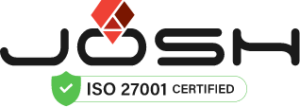The first step to install XAMPP is to open a web browser and go to the XAMPP download website. Click the gray download button at the bottom of the page. You may need to change your browser settings before the download can begin. Once the download has finished, open the XAMPP setup window. You may be prompted to accept a warning message. If this is the case, click OK. A list of XAMPP attributes will be displayed. Check or uncheck any of them. They are all included in the installation.
XAMPP is a free and open-source tool
In order to download and install XAMPP, follow the steps below. Before downloading, you must have an account with Bitnami, which provides one-click setup for popular applications like WordPress and Drupal. Once you create an account with Bitnami, you can then install the applications on your PC by simply clicking the install button. After that, you need to follow the rest of the instructions on the website to set up your website and begin using it.
Once installed, open the Control Panel and select the PHP and MySQL settings. After modifying the config files, you can visit the localhost to check the configuration. The splash screen will ask for your language, so select your preferred one. The XAMPP panel should be displayed after you’ve chosen a language and clicked Next. You can also secure the phpMyAdmin database by clicking the Security tab and selecting Encryption, if necessary.
XAMPP Control Panel allows you to start and stop Apache
The XAMPP Control Panel is an interface that lets you start and stop Apache and MySQL. The Control Panel also allows you to start and stop individual modules. In order to stop Apache, you must click “Stop.”
XAMPP is an easy-to-install Linux, Mac, and Windows version of the AMP stack, which includes Apache, MySQL, and PHP. Installing these programs is easy because XAMPP is available for different operating systems. You’ll need to choose a language before you install them. For instance, if you’re using Mac OS, you’ll need to choose your language.
XAMPP can be installed as a Windows service, and it can also be started and stopped from the XAMPP Control Panel. While XAMPP is not designed for production use, it’s a great development environment. The software contains a built-in installer for the mysql database. You can also use the GUI that XAMPP provides to manage the mysql database. XAMPP automatically installs mysql as part of the installation.
XAMPP is a development server
To install XAMPP, you can either download it from its official website or you can follow the instructions below. There are several different versions available on different platforms, so make sure you select the appropriate one. Upon installing the XAMPP development server, you should be able to access the Control Panel, which includes various buttons, including net stat, explorer, shell, help, quit, and services. Once installed, you can choose to customize the various components within the server.
In the XAMPP development server, MySQL plays the role of a database management system. It helps you manage and store collected data efficiently. This software is free and open source. PHP, which stands for Hypertext Preprocessor, interacts with the webserver. XAMPP also includes Perl, which is a high-level programming language used for network programming and web development.
XAMPP has a Notepad
If you have never installed XAMPP on your PC, you should read this article. This guide will help you download, install, and run the XAMPP web application server on your computer. XAMPP is an open-source web application server. The XAMPP application server can be used to host various kinds of websites, including blogs. It is recommended that you use a ‘home directory’ to store your applications. Alternatively, you can use the default installation location.
XAMPP is a software package that comes with several components, and is designed to help you create a localhost server. It can be installed in multiple locations, including your desktop, so make sure to choose a location where you will install it. If you want to install XAMPP on a laptop or desktop, follow the instructions on the website. After installing XAMPP, you can start using your new application.
0










































